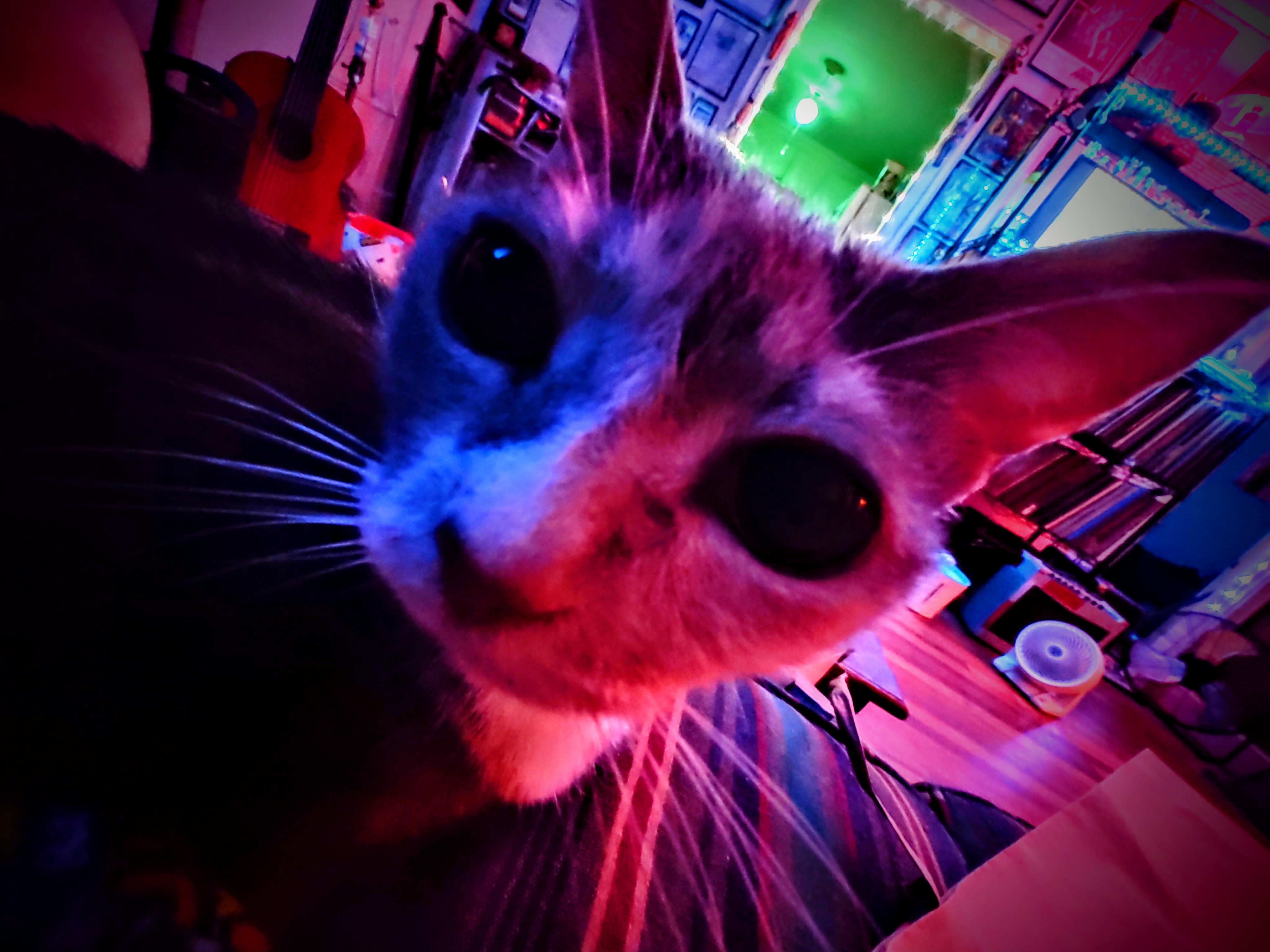This reminds me of a guy in several of the Japanese classes I took in college. He kept trying to convince the professor that he should be exempt from taking exams because he was president of the anime club and was already basically fluent because he watches so much anime. Everyone including the professor thought he was joking at first lol
The dude could barely make it through one sentence when we would have to read in class
I would get it the other way around, skipping to the test and not taking classes
That’s what I did. Except it was physics, not Japanese.
I loved the Japanese classes I took, but the classroom portions were very low key, and if someone was struggling the professors would basically hold their hand through it. The exams on the other hand were brutal lol
“Ok, here’s the test, if you score 90%, you pass, otherwise shut up”.
Here is an alternative Piped link(s):
https://www.piped.video/watch?v=5k_LDXa3lPk
Piped is a privacy-respecting open-source alternative frontend to YouTube.
I’m open-source; check me out at GitHub.
Oh boy, it’s gonna be rough when he learns that you need another ~2.000 kanji to be fluent. Although only ~100 for JLPT 5.
For context, there are only 46 hiragana and 46 katakana.
Japanese is whacky… Like why not just pick one alphabet instead of using 3 different ones? Are they stupid?
Modern Japanese is a chimera of native words, Chinese, Pali, and various European languages. Kanji are used to write the Chinese loanwords, hiregana for the indigenous stuff, and katakana and Romaji for the European loanwords (sort of). You could write everything in hiregana, or even in katakana or Romaji with some effort, but doing it this way is easier.
Modern Japanese is a chimera
Most languages are, it’s just that Europe had the benefit of latin being really dominant. We’re super lucky here we just latinized all the Greek and Hebrew, instead of writing them in their own alphabet.
I had to はし (hashi) over the はし because I forgot my はし at home.
Same word phonetically, three meanings. With Kanji it’s easy.
So what? English has eye, I and aye. Same pronunciation, different writing. You don’t need three writing systems for that.
The Japanese alphabets are phonetic so all homophones have the same spelling. In your example all the words are spelled differently.
Fair enough.
Specifically in the case of Japanese language, the current orthography highly depends on the use of kanji to remove ambiguities from a purely phonetic notation in either kana system.
As a side note, Korean language also used to be written with hanja (Chinese characters) mixed in with hangul (native phonetic alphabet). The shift from mixed hangul-hanja notation to pure hangul was gradual and the major contribution that made it possible was the modernized orthography rules that allows visual differentiation of homophones when written down while adding some complexity. It’s not perfect, but it works.
So, while many argue that kanji is essential to Japanese or hanja needs to be reintroduced in Korean for examples cited, I think the definitive reason is that the japanese speakers themselves doesn’t feel the overwhelming need to switch right now. If they chose to introduce a purely kana orthography and had enough funding and political will, that’s how they will roll.
hey just wanted to ask: what’s up with the circle-bits in korean characters? they’re really unique, I just have no idea what they indicate (if anything) and always wondered…
The circles? You mean
ㅇ? It’s a component (consonant ieung) letter and indicates either:- no sound before syllable’s vowel: 나
[]- 아[] - final sound
[ŋ]at the end of a character block, placed at bottom: 앙[]
yeah, thanks! TIL.
- no sound before syllable’s vowel: 나
In order to pass my english exam, should I learn uppercase? Or just lowercase is OK?
Also, wtf is a looped cursive?
To be fair I’m a native English speaker and I can barely decipher most people’s cursive
I’m just going to pretend I know what all of this means and move on.
Dude wtf you’re all over this site, are you John Lemmy or something?
Anyways, Japanese uses different writing systems – the first two that people usually learn (Kana) are basically just symbols for syllables (also called “mora”), Hiragana and Katakana. They use a different set of “letters” which represent the same sounds (you’ll find a “ka”, “m/n”, “fu”, “o”, etc. in both, but they look different). There’s also Kanji, which is an umbrella term for the various usages of characters which were adapted from Chinese, this includes Kana but generally people don’t mean to include Kana when they say “Kanji”. One Kanji can have MANY meanings and pronunciations, due to many multiple ways in which the character was adapted from Chinese, so the writing is extremely contextual. You can generally “spell out” a Kanji with Hiragana or Katakana, often times this is used when learning new Kanji or to disambiguate meaning. It’s also one of the ways you use to type Japanese on a device/keyboard (the characters can be converted to a Kanji using software where you can pick based on a list of most common Kanji which are pronounced the way you typed).
Since Japanese doesn’t use spaces or dots or anything usually, you’ll often see all three mixed together in order to separate different words, although in modern times Katakana has especially been used for borrowings from foreign languages.
There’s also Rōmaji, which is a term for the various romanization/latinization systems for Japanese. This one is also commonly used to type Japanese text.
The JLPT is the Japanese Language Proficiency Test, you take it to get a certificate stating your Japanese language abilities and the results are ranked from N5 being the lowest (correlates to ~A1-A2 CEFR, slightly more than beginner knowledge) to N1 being the highest (~B2-C2 CEFR, high level of abilities in the language)
The “alphabet” is generally the easiest part of learning a language, and an obviously important part, so the person being unwilling to put the time into it means he probably isn’t serious enough about learning the language to actually follow it through.
Apologies if my explanation is off, I don’t speak Japanese.
Basically asking if they are learning English and is great at the first half of the alphabet, do they really need to learn the second half?
And then there’s Kanji, which is the arguably more important and the most difficult thing in Japanese, which isn’t even mentioned in the post (you starting to learn that in more advanced class, which I doubt they even reached it yet)







